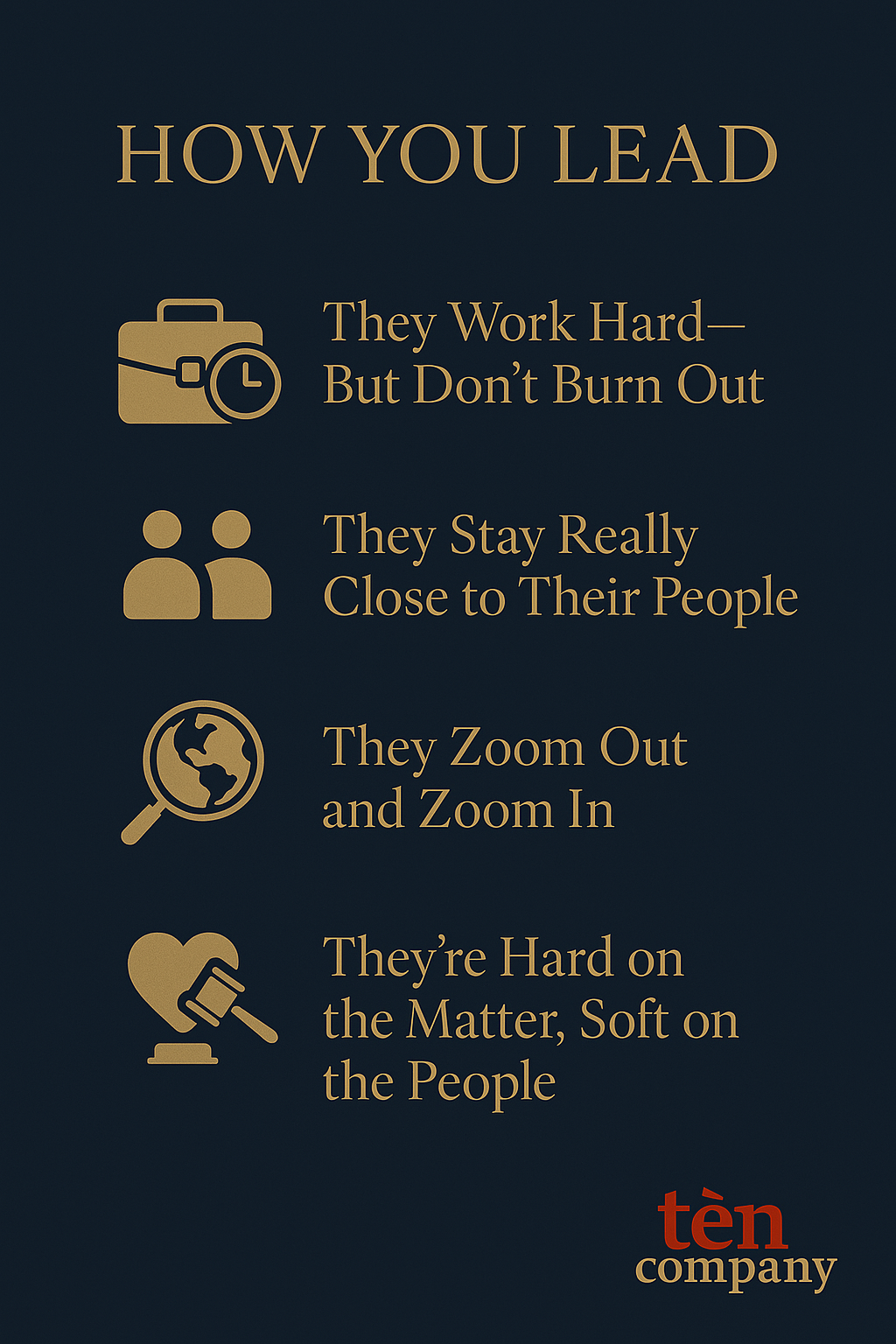
In the last 30 years, I’ve been lucky to work with thousands of leaders — all over the world. I’ve also received leadership and provided leadership myself during the first fifteen years of my professional life. Today, I still lead some of our projects together with our associate partners at tèn company and the Ikigai Coaching Institute.
One thing I’ve learned? There’s not just one way to lead.
Despite all the leadership trainings, management models, and biographies of successful people — there’s no universal playbook. People can be successful in many different ways. In fact, most leaders I know are successful despite some of their behaviours. Think about that!
And yet... there are a few patterns I see in the most effective leaders I work with. Approaches that consistently have a big positive impact. Let me share four of them with you:
1. They Work Hard — But Not to the Point of Burnout
Yes, successful leaders work hard. But they don’t push themselves to exhaustion. They don’t operate on the edge of burnout. They like what they do. It gives them energy. They know when to push — and when to rest. They don’t brag about it. They just do it.
2. They Stay Deeply Connected
The best leaders stay close to their people. And I mean really close. Their teams feel it, instinctively. Why? Because they genuinely care. It’s not a trick. It’s not a management hack. It’s real. And it’s one of the strongest ways to keep people motivated and engaged.
They know what’s really going on in the business — and often prevent issues before they happen.
3. They Zoom In and Out
Strategic thinking is essential. The most effective leaders I know have a clear idea of where they want to take the business. They make time to think. To imagine.
But here’s the real differentiator: they also know when to zoom in. To get into the details. To understand the real story underneath the PowerPoint. It’s this balance between high-level vision and detailed conscientiousness that sets them apart.
4. Hard on the Matter, Soft on the People
This one is special.
Great leaders know when to be tough. But they use that toughness sparingly. By default, they’re calm, caring, and respectful. But not soft.
This balance is rare. Most people lean naturally toward one or the other. Where many middle managers stay “always nice,” top leaders know: kindness and clarity can — and must — coexist.
Final thought
Which leadership behaviours your business needs most from you depends on your role, the phase your business is in, and its priorities.
But here’s the good news: most leadership behaviours can be learned. Like training a muscle — the more you practice, the stronger you get.
Find your own voice. That’s where real leadership starts.
Hope this inspires.
Paul Donkers
Paul P.J. Donkers is a sought-after global business coach and management consultant. More about his work and projects can be found via www.tencompany.org and via www.ikigaicoachinginstitute.com
Paul and his partners work since decades with leaders to assist them create more value. If you want to have a confidential conversation, just reach out to us via This email address is being protected from spambots. You need JavaScript enabled to view it.






